Popular on Food52
Continue After Advertisement
60 Comments
Diana B.
July 5, 2016
Jo Ann, my pizza stone "lives" in the oven on the bottom rack - it's just too heavy to move, so I assemble everything on the parchment, move it to the peel, and use the peel to place it on the stone. If yours is lighter weight or you don't keep it in the oven all the time, you can move it to the middle rack.
Jo A.
July 5, 2016
Question: you state to place a pizza stone on the bottom rack of the over. Then you instruct to cook the gallete on parchment on the middle rack. Do you advise placing the rack and pizza stone once heated in the middle of the over and place the gallete and parchment paper on it? Please advise
Rebecca V.
July 5, 2016
Hi, Jo Ann-- I just leave the pizza stone on the bottom rack of the oven during preheating; having it in there helps keep the oven temperature high and even during baking. I do *not* bake the galette on a sheet tray directly on top of the stone because it can dry out and scorch depending on how dry the ingredients already are. I bake the galette on a separate oven rack in the middle of the oven.
Jennifer H.
June 20, 2015
Quick question. You say with fillings that can't take the heat for that long to add them in partway through baking. Can you please explain how you do this?
Rebecca V.
July 5, 2016
Hi, Jennifer! Just take out the galette, pop on whatever you want, and place it back in the oven.
Merrilee A.
June 14, 2015
in the oven as I type- can't wait to enjoy! strawberry/cherry combo with some mint
ana
July 14, 2013
I've been thinking of making a sour cherry custard galette, using the custard as "insurance". Does anyone have a custard filling recipe that might work?
Diana B.
July 14, 2013
I don't have a recipe, but would just suggest you cook the cherries enough to release their juices, drain and cook the juices down to a syrup, add back the cherries and whatever seasonings you like with them (cinnamon? cardamom? a little brown sugar?) and go from there.
Rebecca V.
July 15, 2013
Hi ana-- That sounds great! If you're up for a pastry cream, the for "Honey Pear Galette" at kokocooks.com looks delish and like it worked out well. Otherwise, I've found many other examples for "galette" and "custard" searched together online. Would love to hear how it works out!
Kristen M.
June 20, 2013
I had to share this -- check out what Dorie Greenspan uses as her "insurance" in this galette: graham cracker or Puffin cereal crumbs! http://blogs.kcrw.com/goodfood/2010/06/pie-a-day-7-dorie%E2%80%99s-fruit-gallette-with-magic-butter-custard/
Rebecca V.
June 21, 2013
haha that's great. so many possibilities... also reminds me of the pretzel pie crust i tested. these things can turn out surprisingly well!
Diana B.
June 17, 2013
Oh, my, I just saw Joanne Weir make a mushroom and blue cheese galette with sour cream in the dough - doesn't that sound amazing? Actually, on the show she used creme fraiche instead of sour cream, and any kind of blue cheese will do, not just Stilton. Recipe here: http://www.joanneweir.com/recipes/firsts/warm-stilton-mushroom-galette.html
Rebecca V.
June 18, 2013
that does sound amazing! mmmm... i've been meaning to try making creme fraiche at home, sounds pretty easy (just found adrianna's "small batch" post with instructions). have you tried it with either?
needless to say, if anyone is making a savory galette of course you can just leave the sugar out of the dough. and add creme fraiche :) curious if anyone tries something that turns out well...
needless to say, if anyone is making a savory galette of course you can just leave the sugar out of the dough. and add creme fraiche :) curious if anyone tries something that turns out well...
Tucker &.
June 17, 2013
It would be fun to make mini-galettes. (Not sure about the spelling). Savory for apps, or sweet for desserts. Just thinking :-)
Foodiewithalife
June 17, 2013
I've only made galette once and it was a 5 on a scale of 1-10... This recipe has rejuvenated my interest and might be the next thing my kitchen turns out! Thanks for sharing!
Christina
www.foodiewithalife.com
Christina
www.foodiewithalife.com
Lori1528
June 17, 2013
I love the sound of the savoury Galette, but just wondering how to prepare..do most of the ingredients i.e. potatoes need to be fried before putting inside? Sorry not a great cook so need the guidance. Really like the sound of potato and goat cheese for an appetizer. Thanks
Rebecca V.
June 17, 2013
i don't remember exactly what i did to the potatoes, but you could slice thin rounds and lay them flat on the dough, maybe some pesto or whatever you have underneath (remember, exposed pesto/goat cheese/etc will dry out so if you want it on top then add it later). i don't think the potatoes would need to be cooked... 45+min at 400F should do the job. curious to know how it goes!
Rebecca V.
June 17, 2013
also, if you're doing savory, may be a good idea to spray/brush things with some olive oil before they go in. sort of the equivalent of adding sugar on top of fruit.
Tucker &.
June 16, 2013
Just got the first 4 quarts of June bearing strawberries today. Wonder what I'm going to do with a couple of serious handfuls.
Kerryloves2travel
June 16, 2013
Wow! Tis the season of the galette. I just made boysenberry with fresh picked boysenberry. Spread a bit of homemade blackberry peach jam on bottom, filled with boysenberries (sugar, lemon & flour to thicken) fold crust,sprinkle all with sugar and bake. Smells Wonderful & will make great ending to today's Father's Day dinner with a scoop of vanilla bean ice cream on side.
Last week made a peach galette w/ raspberry jam pon bottom. If you spread a bit of jam on bottom, you don't have to use as much sugar on fruit & help with thickening. Crust I have been using also has ground almonds in it. Yum.
Last week made a peach galette w/ raspberry jam pon bottom. If you spread a bit of jam on bottom, you don't have to use as much sugar on fruit & help with thickening. Crust I have been using also has ground almonds in it. Yum.
Rebecca V.
June 16, 2013
oooh i wish i could get fresh boysenberries around here... sounds delightful. i've never tried spreading jam on the bottom, only on top when it comes out of the oven (apricot jam on almost any fruit, nice and glossy mmm). great idea! sprinkling all with sugar gives really nice results; i usually use 1/4 to 1/2c on top right before it goes in the oven.
i couldn't see my dad today but i promised to bring him a galette next weekend :) hope you're enjoying the day!
i couldn't see my dad today but i promised to bring him a galette next weekend :) hope you're enjoying the day!
J. P.
June 16, 2013
I've made this a least a hundred times in various forms. My two favorite are blueberries with a hint of fresh lavender - and what I call a BLT - tomato and pancetta filling (you have to cut and drain the tomatoes overnight with a weight) and served with an arugula salad.
Rebecca V.
June 16, 2013
lavender, great idea! i have a bag of french lavender i've been trying to think of things to do with. how do you use it? thanks for inspiration!
asz
June 16, 2013
did you just use strawberries in the one above?
Rebecca V.
June 16, 2013
that one was done in the central kitchen, so i'm not sure... looks like strawberries and a thickener? rhubarb would be great to add while it's still in season!
Diana B.
June 16, 2013
This is great, since summer fruit is beginning to come in in abundance (at least, here in California it is - you should see the strawberries and peaches I got at the farmers market yesterday!). So does your dough recipe make one galette or two? It's a little confusing, because the recipe says to pat the dough into one or two discs before refrigerating to rest, depending on how many galettes you want to make. Thanks!
Rebecca V.
June 16, 2013
good question, thanks for asking. if you do the quantities mentioned in the ratio, it will give you enough dough for 2 galettes. i always split in half, rest both, and either make two at once or the other one not that long after. the dough can rest in the fridge for at least a few days; it may develop tiny brown dots, but not to worry. still good to use. yours sound like they will turn out great!
Diana B.
June 16, 2013
Thank you, Rebecca! I Googled "moondust" and found at a number of sites that the dough recipe (essentially a pate brisee) is one Jacques Pepin created at Chez Panisse many years ago - culinary history is so interesting, isn't it?
Rebecca V.
June 16, 2013
i think maybe i had read that at some point about jacques pepin, but i had forgotten! i saw him do a demo once of simple kitchen techniques... it was even amazing just to watch him peel vegetables.
mgo19991
June 16, 2013
Mmmmm. I will make this with beautiful Michigan strawberries and a little rhubarb in season now.
Rebecca V.
June 14, 2013
expanding on comment to arcane54 below--
chez panisse moondust was in that first galette i mentioned at the top of the article, but it's a lot of work-- and obviously requires a recipe! you can still use noyaux (the kernel inside a stone fruit pit) in your insurance dusting under the fruit even without making amaretti first.
so for anyone who doesn't throw away the pits and wants to add that soft, wonderful, bitter flavor to a stone fruit galette, i recently discovered two things: 1) even really dried-out noyaux will rehydrate beautifully in a glass of tapwater set someplace warm like a sunny window, and 2) choking up all the way to the neck of the hammer allows you to crack open a dried-out pit in one small swing. so i recommend letting those pits dry out all the way and then rehydrating!
amanda wrote a great article on stone fruit kernels for the nyt a while ago, you can google that or "moondust" for more information. and the usual caveat: don't eat the kernels raw. i toast them in the pan until medium brown, but if you're not familiar with noyaux just read a little first and see what suits you.
chez panisse moondust was in that first galette i mentioned at the top of the article, but it's a lot of work-- and obviously requires a recipe! you can still use noyaux (the kernel inside a stone fruit pit) in your insurance dusting under the fruit even without making amaretti first.
so for anyone who doesn't throw away the pits and wants to add that soft, wonderful, bitter flavor to a stone fruit galette, i recently discovered two things: 1) even really dried-out noyaux will rehydrate beautifully in a glass of tapwater set someplace warm like a sunny window, and 2) choking up all the way to the neck of the hammer allows you to crack open a dried-out pit in one small swing. so i recommend letting those pits dry out all the way and then rehydrating!
amanda wrote a great article on stone fruit kernels for the nyt a while ago, you can google that or "moondust" for more information. and the usual caveat: don't eat the kernels raw. i toast them in the pan until medium brown, but if you're not familiar with noyaux just read a little first and see what suits you.
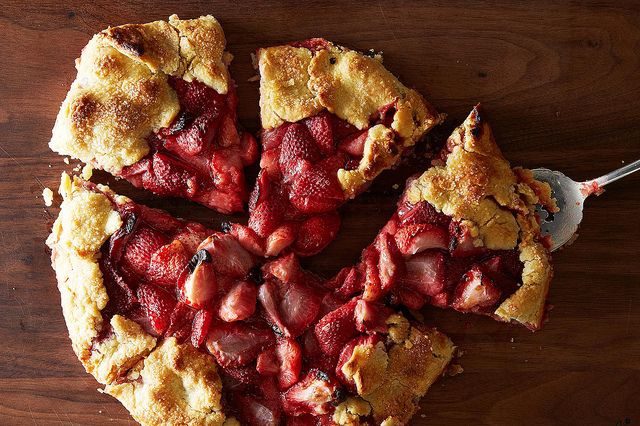
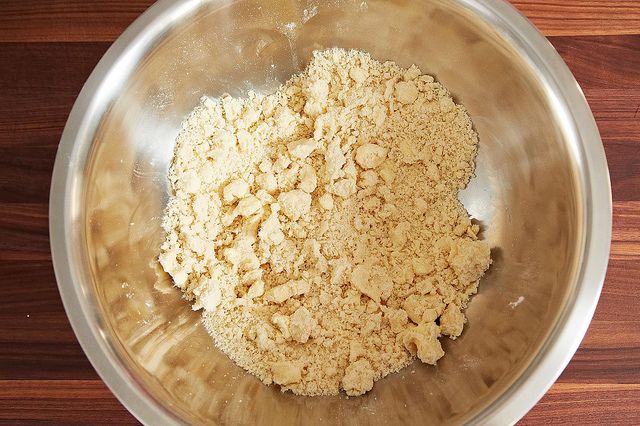
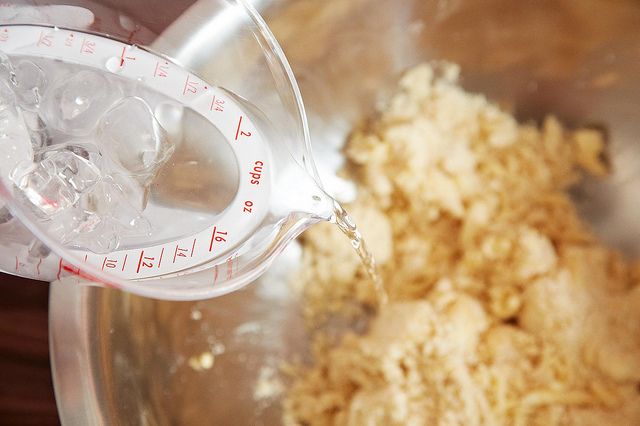
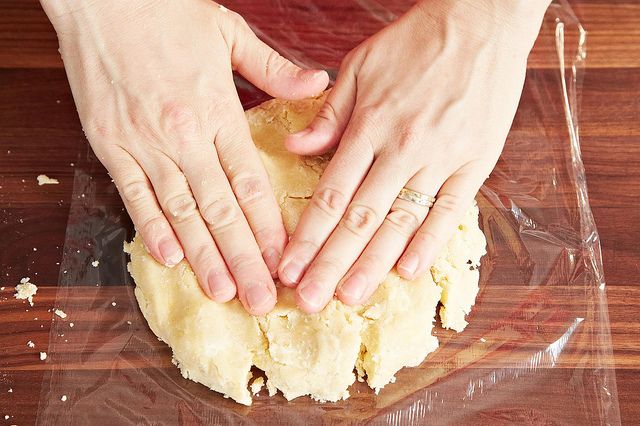
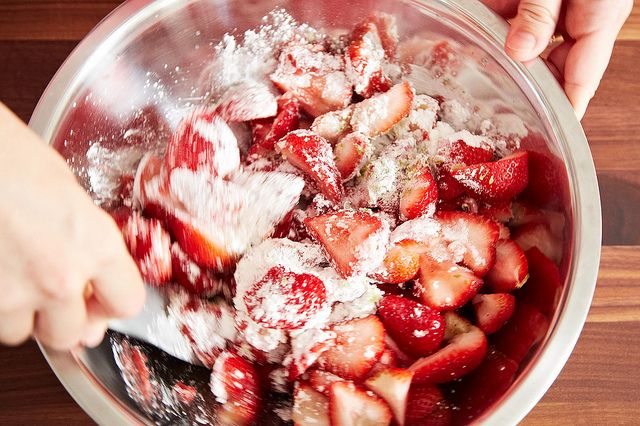
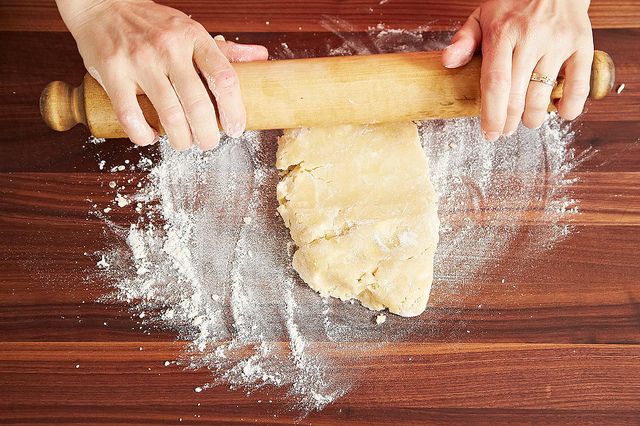
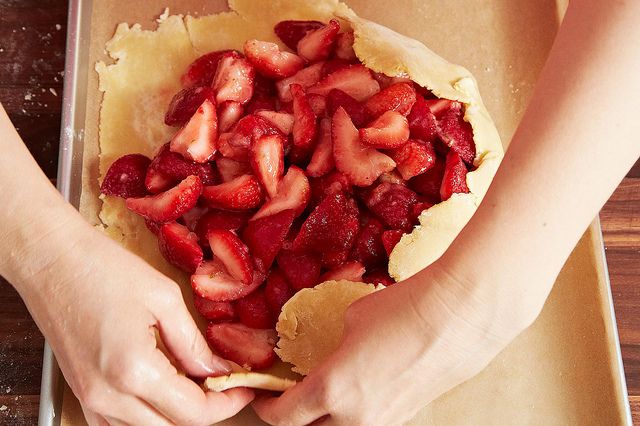
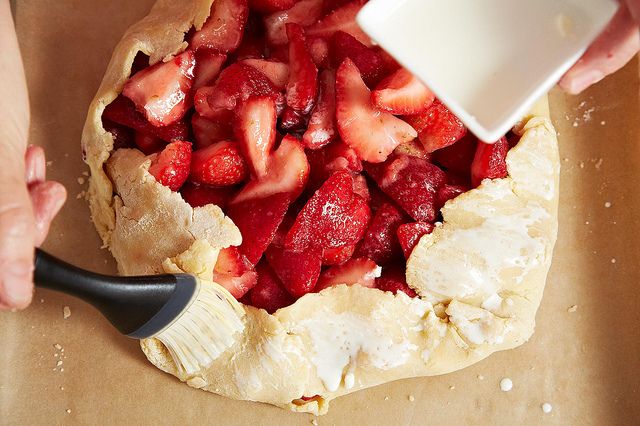


See what other Food52 readers are saying.